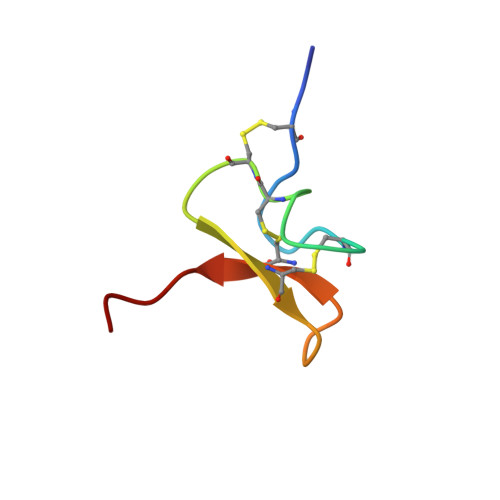Molecular basis of the interaction between gating modifier spider toxins and the voltage sensor of voltage-gated ion channels.
Lau, C.H., King, G.F., Mobli, M.(null) Sci Rep 6: 34333-34333
- PubMed: 27677715
- DOI: https://doi.org/10.1038/srep34333
- Primary Citation of Related Structures:
2N1N - PubMed Abstract:
Voltage-sensor domains (VSDs) are modular transmembrane domains of voltage-gated ion channels that respond to changes in membrane potential by undergoing conformational changes that are coupled to gating of the ion-conducting pore. Most spider-venom peptides function as gating modifiers by binding to the VSDs of voltage-gated channels and trapping them in a closed or open state. To understand the molecular basis underlying this mode of action, we used nuclear magnetic resonance to delineate the atomic details of the interaction between the VSD of the voltage-gated potassium channel KvAP and the spider-venom peptide VSTx1. Our data reveal that the toxin interacts with residues in an aqueous cleft formed between the extracellular S1-S2 and S3-S4 loops of the VSD whilst maintaining lipid interactions in the gaps formed between the S1-S4 and S2-S3 helices. The resulting network of interactions increases the energetic barrier to the conformational changes required for channel gating, and we propose that this is the mechanism by which gating modifier toxins inhibit voltage-gated ion channels.
Organizational Affiliation:
Institute for Molecular Bioscience, The University of Queensland, St. Lucia, QLD 4072, Australia.














